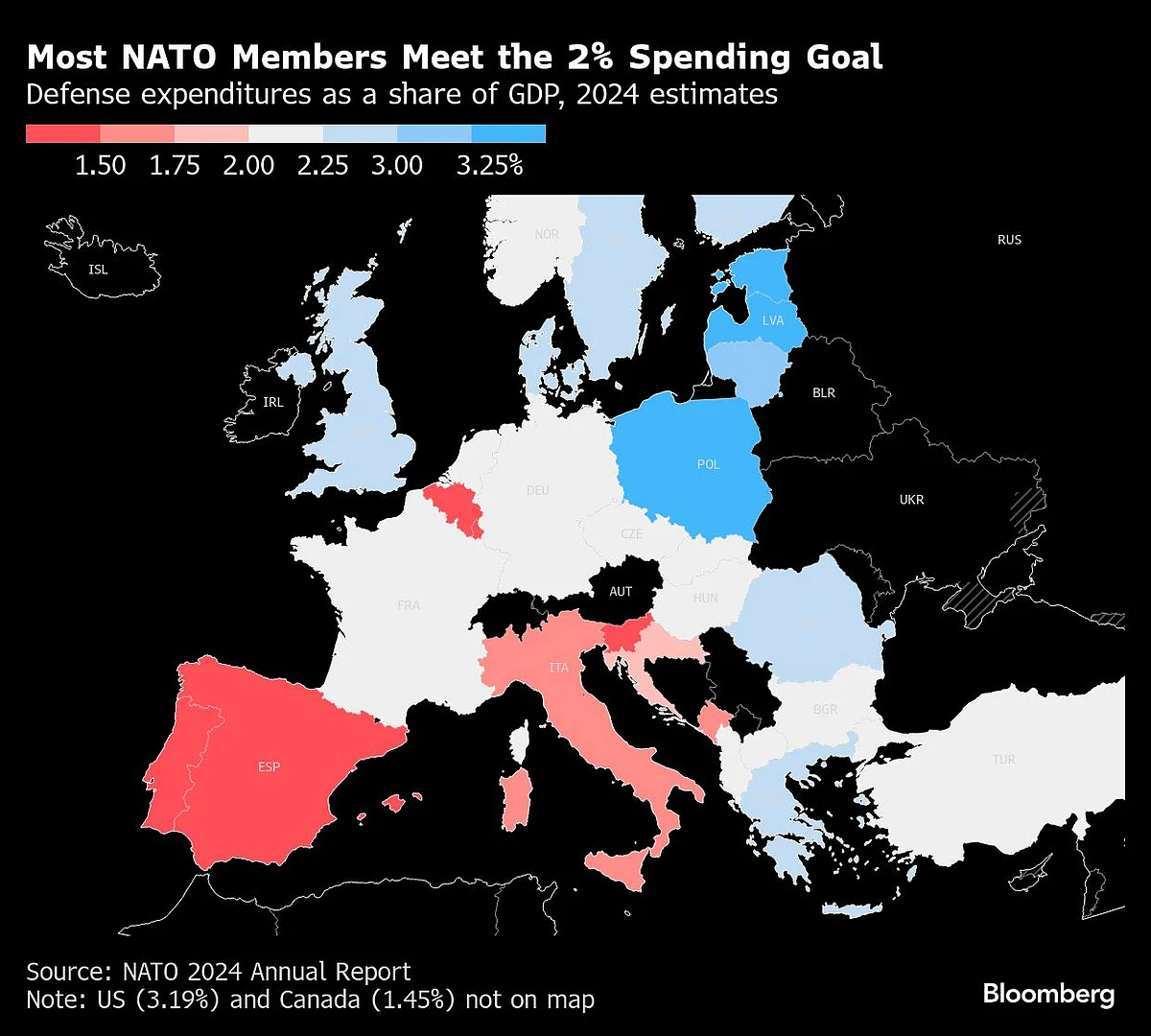NATO Leaders Endorse Historic Plan To Boost Defense Spending To 5% Of GDP
The decision from the North Atlantic Treaty Organization’s 32 members at their high-stakes summit in The Hague is a major win for Donald Trump.

NATO leaders agreed to increase defense spending to 5% of GDP and renewed their “ironclad commitment” to mutual defense in an historic move that comes at the time of an increasingly belligerent Russia.
The decision from the North Atlantic Treaty Organization’s 32 members at their high-stakes summit in The Hague is a major win for Donald Trump who has repeatedly lambasted his European allies for underspending on security. The US president, who wavered in his commitment in the lead-up to the summit, on Wednesday called it a “tremendous” gathering and pledged his backing for Article 5, which requires members to defend each other from attack.
“I stand with it,” Trump told reporters after a 2 1/2-hour working session with NATO leaders. “That’s why I’m here.”
The declaration endorsed at the two-day summit in the Netherlands states that allies “reaffirm our ironclad commitment to collective defence” and “remain united and steadfast in our resolve to protect our one billion citizens, defend the Alliance, and safeguard our freedom and democracy.”
The summit has been dominated by efforts to ensure that Trump remains engaged with the transatlantic alliance amid growing concerns that the US is looking to pull back weapons and troops from Europe. Ukraine’s allies are also struggling to mount an effective response to Russia’s war in the country, which is now well into its fourth year.
“Together allies have laid the foundation for a stronger, fairer, more lethal NATO,” Secretary General Mark Rutte said at a news conference after the meeting.
The declaration said the new target, which will mark an increase from the current spending goal of 2%, comes in response to “profound security threats and challenges, in particular the long-term threat posed by Russia to Euro-Atlantic security and the persistent threat of terrorism.”
Rutte has suggested that the Kremlin may be in a position to consider an attack on the alliance within five years.
The declaration affirms NATO’s support for Ukraine, while omitting last year’s statement that the country’s future is in the alliance, reflecting the Trump administration’s growing reluctance to provide more military assistance to Kyiv. The US president is scheduled to meet President Volodymyr Zelenskiy on Wednesday on the sidelines of the summit as Kyiv seeks to buy more US weapons.

The new target, which breaks down into 3.5% for core defense spending and additional 1.5% in related investment including infrastructure and cybersecurity, has come after months of coaxing by Rutte and will open the floodgates for trillions of dollars in defense spending until 2035.
Whether reaching the target is going to happen eventually remains an open question and comes at a time when many European countries are already grappling with high public debt levels. Some of them, led by Spain, questioned whether they will need to spend so much to meet the new ambitious lists of weapons and troops that each needs to provide as part of its NATO commitment.
The allies have agreed that “the trajectory and balance of spending” will be reviewed in 2029. Direct contributions toward Ukraine’s defense will also count toward their military spending, according to the declaration.
German Chancellor Friedrich Merz told leaders that the summit was all about “putting our money where our mouth is.” The clear message from the allies to Russian President Vladimir Putin was: “Don’t pick a fight with NATO,” he said during a close-door session, according to a government official.

